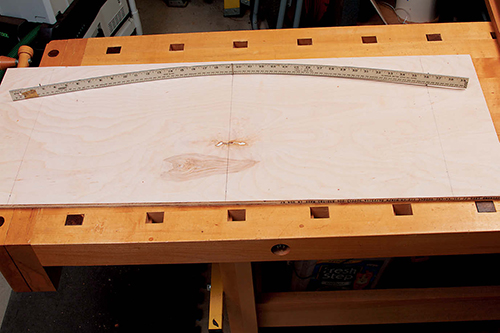
This woodworker is building freestanding bookshelves to fit along a curved wall and wants design advice about how to make the curved shelves. Plywood with an edge band? Cut a glued-up board to shape? Plywood with dry bent edge glued to it? Or a straight shelf with a curved front attached to it?
Lee Grindinger: Assuming you have the tooling to do the job, I’d recommend solid wood. Although there is generally more waste gluing up the solid stock, and definitely more labor, solid wood shelves will be stronger, and the edge grain presents itself better since it runs from the face of the shelf through the edge. Plywood is faced with such thin veneer-less than 1/30″-that it leaves little room for sanding and wear, and voids in core veneers can telegraph through the face veneer and finish. This is one reason most commercial shops have switched to MDF cores. The upside to plywood is that you don’t have to mess with glue-ups and surfacing, but you do have to band plywood, and this can get tricky – depending on the radius. The banded edge always will obviously be a banded edge, and if the banding is thin tape or solid material you cannot put a profile on the edge. Compare the price of a square foot of plywood to a board foot of solid lumber; they are surprisingly close. And if the waste from a 4′ X 8′ sheet is bad for your layout, it may be a wash. Solid wood will be more labor, to be sure, but the results are worth it.







